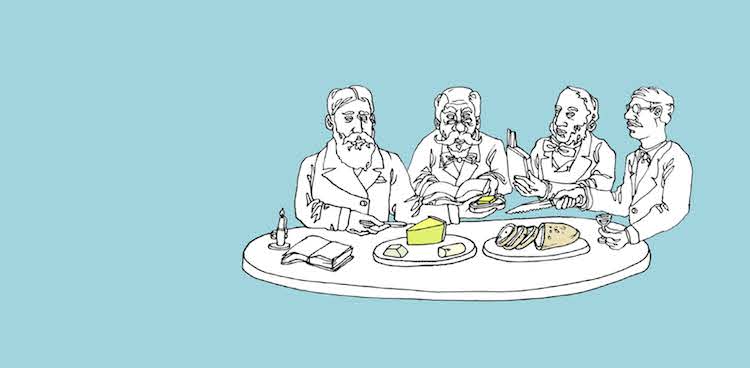
I’m not much of a joiner. I’ve got a AAA card, sure, but I gave up on the dance class. I’m not on the alumni committee, either. And this column? Strictly freelance.
But in the cheese world, we Bowling Alone types are far from the norm. With the exception of Kurt Timmermeister, that one-man-dairy from last issue’s Centerfold feature, cheese is a team sport—one of those things that begs for organization.
There’s a lot of joining you can do, especially if you’re in the business of cheese. There are trade groups, such as the American Cheese Society and the Raw Milk Cheesemakers Association, as well as regional collectives. I recently visited Agriform, a billion-dollar Italian distributor described as “a collective of collectives.” I admit that industry has its own romance; it was thrilling to watch cheese robots roam the Agriform warehouse and hoist wheels of Grana Padano the size of car tires, but in the end I don’t own a cheese shop or a cow; they don’t take my kind.
You’re more likely to find me at a Bread and Cheese club, several of which have existed over the years. They are writer’s clubs, the most famous one being founded by James Fenimore Cooper, author of The Last of the Mohicans. He was already a literary star when he moved to New York City in 1822 and started a club that “brought together every week the cleverest men in the town”—artists, writers, philosophers, and scientists, all united under the humble mantle of cheese.
As founder, Cooper had sole power to nominate new members. Once a candidate was selected, though, existing members would vote by casting ballots of bread or cheese, “one of cheese deciding adversely to admittance.” (On second thought, maybe that’s what that gift basket from the Writer’s Guild was all about. . . .)
I’ve always thought that nothing could be more pretentious than the wine-and-cheese parties of my grad school experience, but now I find they were strictly in line with academic tradition. Cheese has all the qualities that attract creative types—inexpensive, filling, and a little bit ridiculous, as I discovered recently when my father handed me a copy of Operation Mincemeat. The book is a record of the most successful counterintelligence mission of the Second World War. It was an unlikely-sounding plan based on planting fake documents on a body and arranging for it to be washed ashore where the Axis powers would find it. Not surprisingly, a cheesist was mixed up in the plot, a man by the name of Ewen Montagu.
Ewen was an organizer, a skill he demonstrated early on when he and his brother Ivor founded the Cheese Eater’s League while they were students at Cambridge. The brothers shared a passion for cheese and founded a dining club to import and taste the most exotic dairy specimens from around the world: camel’s milk cheese, Middle Eastern goat cheese, cheese made from the milk of long-horned Afghan sheep.
“Our great ambition was to get whale’s milk cheese,” Ewen wrote, and to this end he contacted a whaling company to arrange that “if a mother whale was killed the milk should be ‘cheesed’ and sent to us.” History doesn’t reveal whether the brothers ever scored this particular cheese. But we can be pretty certain that through their league they at least succeeded in bringing together some curious folk. Cheese attracts characters; like moist slices of Muenster, when they meet they adhere.



